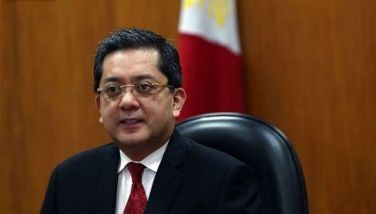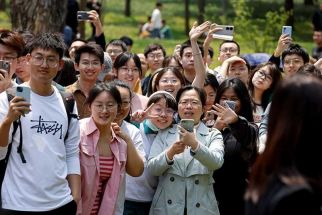News Analysis: ASEAN economic integration in 2015 draws conflicting views in Phl
MANILA, Philippines (Xinhua) - Two conflicting views have emerged in the Philippines on whether or not the country is ready for economic integration in the Association of Southeast Asian Nations (ASEAN) under the ASEAN Economic Community (AEC) which will start to take effect next year.
As expected, the government of President Benigno Aquino III is confident that the Philippines has already put in place the necessary measures to cushion the effect of AEC on the local economy, now one of the fastest growing economies in the region.
The AEC aims to create a single market economy with free movement of goods, services and investments throughout the 10- member nations of ASEAN. It would be the culmination of the regional grouping's economic efforts since the 1990s.
The leaders of ASEAN adopted the AEC blueprint in 2007 as a guide for all member countries, including the Philippines, in establishing the AEC, which envisions a stable, prosperous, highly competitive economic region with "equitable economic development and reduced poverty and socioeconomic disparities."
The Department of Trade and Industry (DTI) has said that the Philippines is "primed and ready" for the AEC, with DTI Undersecretary Adrian Cristobal Jr. saying that the integration scheme would mean vast opportunities for intra-ASEAN investments, dynamic competition as well as complementation.
"Since 2010, most ASEAN goods have been traded in the region at zero tariff, including products from the Philippines. A considerable number of our local companies have since established their presence within ASEAN, engaged in healthy competition with businesses located in the region," Cristobal said.
According to Cristobal, the private sector has been aggressive in gearing up for competition and complementation, "To better serve a bigger market outside the ASEAN and strengthen its market presence. The government, on the other hand, is addressing non- tariff barriers so we can benefit more from intra-ASEAN trade."
But Philippine businesses are saying a different thing.
In a forum organized by the Management Association of the Philippines, BDO Unibank Inc. President Nestor Tan said that protecting the country's agricultural and financial services sectors, as well as the labor sector, would be necessary for the implementation of AEC by 2015.
Tan, who heads the country's largest bank, said that while some businesses see the AEC as an opportunity, the integration would be more of a threat to local firms. "I think the Philippine industries are not ready yet," he said.
Standard & Poor's also believed that banks in the Philippines were not yet prepared for the tougher competition that would result from the integration of Southeast Asian economies.
In one of its latest publications, S&P said banks in the country, although profitable and stable, have a much smaller business scale compared with their counterparts in the region.
The credit-rating firm said that Philippine banks might find it difficult to preserve market share with the free entry of foreign competition that would follow the regional integration. "We believe banks (in the Philippines) will have to walk a thin line to preserve market share while pursuing profitable expansion as ASEAN 2015 draws closer," S&P said in the report titled "The Philippines' Banking System: The Good, the Bad and the Ambivalent. "
Even the Bangko Sentral ng Pilipinas (BSP), the country's central bank, has been cautious in reacting to the ASEAN integration scheme.
In a forum in Makati City in February, BSP Deputy Governor Diwa C. Guinigundo said that although ASEAN members have already made "achievements" toward the goal of financial markets integration, the country has specific challenges to address in order to enjoy the benefits and opportunities of a financially integrated region. "The ASEAN goal for 2020 is for a semi-integrated market and not full liberalization. We want a fully integrated market, but we realized that initial conditions and the readiness of ASEAN member- states will not be able to yield to that kind of desired outcome. We want to be more realistic and achieve what we can achieve," Guinigundo said.
Guinigundo, who also sits as one of the country's representatives to ASEAN banking and finance institutions, said the country's banking system pales in comparison in terms of the size and magnitude of the assets and capital base of other banks in the region.
He said that compared with its peers in the region, the country has the lowest provision for foreign investor exposures.
In particular, Guinigundo cited that the 40-percent foreign ownership cap in the country is low compared to the 99 percent in Indonesia. He also said there is "no hard limit" to foreign ownership in Malaysia and in Singapore, and while there is a 50- percent cap in Thailand, there is a "flexibility clause" that would allow foreign ownership beyond 50 percent on a "case-by- case" basis.
Guinigundo said that the total assets of all Philippines banks are only equivalent to one big bank in Malaysia and that the combined assets of the three largest banks in the country are only as big as one bank in Thailand.
He also said that the total capitalization of the entire Philippines banking system is only about the size of one Singaporean bank.
- Latest
- Trending



























